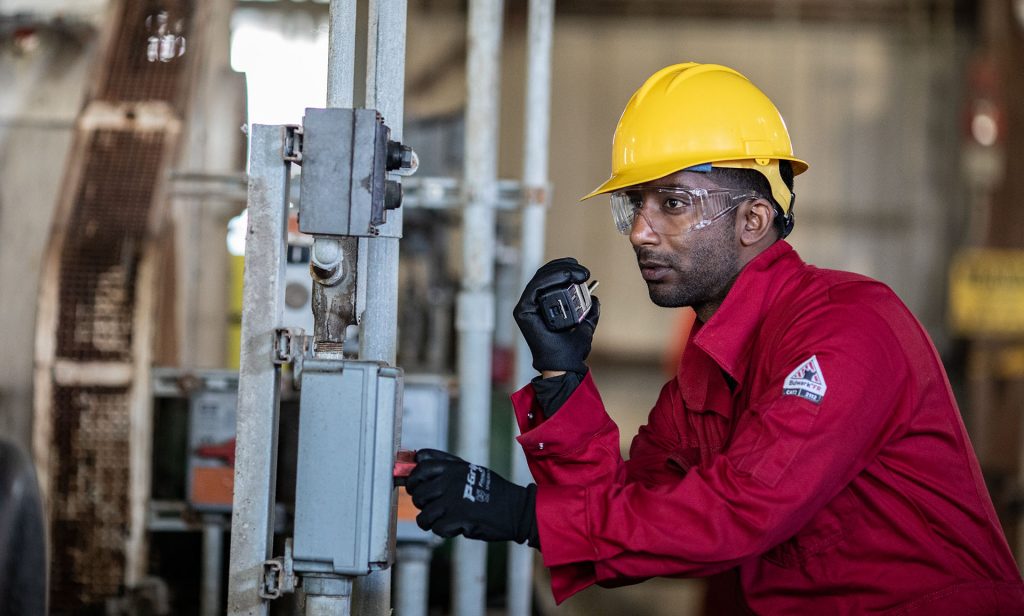
A Critical Call—and a Close Call
Deep inside the oil refinery, a maintenance worker reached for his radio to report a pressure drop. But before he could press the button, his supervisor stopped him cold. “That model isn’t rated for this zone. One spark could trigger an explosion.” It was a split-second decision that may have prevented a catastrophe.
In high-risk environments where explosive gases or vapors are present, using the wrong communication tool isn’t just a mistake—it’s a threat to lives and infrastructure. That’s why more companies are taking a closer look at their equipment and asking: What’s new in this space? What improvements are being made to keep workers safer, more connected, and more productive?
This blog explores the latest trends in intrinsically safe radios—from smarter designs to advanced tech integrations that are redefining how teams communicate in the world’s most dangerous work zones.
Understanding Intrinsically Safe Radios
What Makes Two-Way Radios “Intrinsically Safe”?
Intrinsically safe (IS) two-way radios are specifically designed to prevent an ignition and explosion in hazardous environments. They’re engineered to limit electrical or thermal energy, reducing the risk of sparks that could cause a fire or explosion.
Unlike standard two-way radios, IS two-way radios are tested against intrinsic safety standards and carry special certification marks. These two-way radios are essential in environments where a single mistake—like a dropped radio or exposed battery terminal—could lead to disaster.
Who Uses These Radios?
A wide range of industries rely on intrinsically safe two-way radios. In the oil and gas sector, IS radios are mandatory for crews working near flammable vapors. Chemical plants, refineries, and underground mining operations also require radios that meet strict intrinsic safety certification.
Even utility companies, emergency response teams, and large manufacturing plants rely on safe radios when operations require them to enter hazardous locations or unpredictable field conditions.
Safety and Smart Features
Radios That Support Work Safety
Today’s safe two-way radios are doing more than just enabling conversation—they’re becoming core tools in work safety strategies. Features like lone worker alerts and man-down detection allow real-time emergency response in explosive atmospheres when seconds matter most.
Big Data in Small Devices
Evolving Designs for Harsh Environments
Bluetooth and Accessory Compatibility
Built Tough: Waterproof and Dustproof
Slimmer and Lighter
The Role of Leading Manufacturers
Motorola Solutions and Kenwood Push for Innovation
Motorola Solutions and Kenwood continue to lead the market, offering radios that meet all IS certification standards while packing in modern audio enhancements, dual-mode operation, and extended battery life. Their Motorola MOTOTRBO and Kenwood NX lines show how safe communication doesn’t mean sacrificing performance.
Looking Ahead: Where Safe Radios Are Headed
The Future of Intrinsically Safe Two-Way Radios
Trust Tridon for Your Intrinsically Safe Two-Way Radios
Every second counts when you’re operating in a volatile environment. That’s why the latest trends in intrinsically safe radios go far beyond certification compliance—they’re reshaping how we think about safety, communication, and field performance.
At Tridon Communications, we specialize in helping businesses deploy safe radios and smart communication systems built for hazardous locations. Whether you’re operating in remote terrain, extreme heat, or a chemical-rich environment, we’ll help you find the right solutions that protect your people and keep your teams connected.
Not sure if your current radios meet intrinsic safety standards—or just starting to explore your options? Tridon Communications is here to help. Reach out to our team of communication specialists for expert advice tailored to your specific job site, budget, and safety requirements.
TRUST TRIDON!
